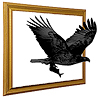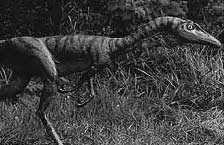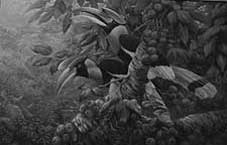| |
|
| |
Science Art in Classrooms and Corridors
Darryl Wheye, CEO Science Art-Nature
July, 2015
Classrooms and Formal Learning:
It was 1994. The response to our experimental, art-based website featuring birds was favorable. The plan had been to test the website in Prof. Paul Ehrlich’s course, "The Biology of Birds", at Stanford University. We wanted to know if students found it useful to look at art related to material covered in class or likely to come up during field trips. We also wanted to know if they found it useful to refer to the website’s timeline.
I had sorted hundreds of images into five categories. Three categories showed birds as icons, resources, and teaching tools. The other two called attention to aspects of their biology and conservation. I had also mapped production of the art relative to various milestones. Milestones might include, for example:
In 1841, oil paint in tubes allowed artists to work outside and the bird collection in the Academy of Natural Sciences in Philadelphia became the largest in the world. Four years later, in 1845, the term, “carrying capacity” was first used and nine years after that, in 1854, Henry David Thoreau published Walden.
Obtaining permission to use the images online had been cumbersome and production predated HTML (which became a standard in 2000), but a website still seemed our best bet to determine if students would give the idea of bringing together art and science a thumbs up.
They did.
The thumbs up reaction would continue. In 2000, Prof. Donald Kennedy (who had been associated with the bird course and had so effectively sharpened the focus of the science lens when reviewing the website text) co-taught a Stanford course called “The History of Nature/The Nature of History: Humans and the Natural World”. The humanities course was designed to encourage students to think historically about the relationship between people and nature. For each class, I provided links to bird images in the 1994 website that seemed to dovetail well with Prof. Kennedy’s lecture and augment the readings in Pliny, Thoreau, George Perkins Marsh, Darwin, and Rachael Carson
|
| |
|
Why the thumbs up? It's not at all clear, but it's possible that including Science Art does more than emphasize points made during discussions. For example, mentioning that nest-robbing rats ravaged a colony of terns (seabirds) may not be especially memorable. Adding that the rats reduced that colony of brown noddies (Anous stolidus) from 35,000 to just 400 individuals within a 19-year period may help. Following that with, say, this image of black rats raiding a barnyard chicken nest may make the actions of the rats marauding the noddy colony more visceral. It might even help provide a visual “bookmark” for the narrative. Had the image portrayed the noddy colony rather than a chicken coop, any "bookmarking" would likely be even more effective.
|
Black Rat
John James Audubon
1854
An image from the 1994 experimental website for the Biology of Birds course.
|
|
| |
Exhibits and Informal Learning:
Do the benefits of adding Science Art to lectures extend to displays beyond the classroom?
In 2014, Prof. Kennedy and I arranged to have prints by John James Audubon featuring species found on the Stanford University campus installed in nine campus building. To make the experience of viewing the art more immediate and pertinent, each piece was installed near an exit that opens toward an area the portrayed species might be seen. Would the artwork lead more people to spot the birds as they exited the buildings? What role would the Science Art captions play?
|
| |

Red-shouldered Hawk
John James Audubon
c.1826
One of the images from the
"Art at Exits" Exhibit at Stanford University
|
|
Each installation includes text that provides a science lens and tells students where to look for the birds on campus. Each also helps students become more aware of the role of the featured bird within the campus community and what is needed to help maintain its presence.
Mobile access to the text allows students to read it when they spot the species outdoors. Online forms are available for submitting related art, photographs, research, prose and poetry. Hopefully, the forms will make it easy for students taking science, art and writing courses to post related material on the exhibit’s website. It’s not clear, yet, how useful these options will be.
The Audubon installations will remain in place for at least two years, but the project holds promise for expanding to include more species and more works of art. It will be interesting to find out if, over time, students give this pilot project a thumbs up, too.
The "Art at Exits" exhibit is supported in part by the National Audubon Society, by Stanford University’s Bill Lane Center for the American West, Center for Conservation Biology and Stanford Arts Institute, and by Science Art-Nature. The frames and installation are provided gratis by VKK Signmakers, Inc., of Redwood City, CA. The Audubon images are provided with permission of the National Audubon Society.
|
| |
(Donald Kennedy, Paul R. Ehrlich and Darryl Wheye were founding board members of Science Art-Nature. DK and DW wrote Humans, Nature and Birds: Science Art from Cave Walls to Computer Screens (Yale University Press, 2007) encouraging the use of captions that provide a science lens when displaying works of art that portray truths about nature. PE’s Introduction provides an overview of the value of art to science and how the two intertwine.)
|
|
 Science Art-Nature
Science Art-Nature Science Art-Nature
Science Art-Nature

